Quantentechnologien
Prof. Menno Poot
Forschungsgebiet
Unsere Arbeitsgruppe beschäftigt sich mit Quantentechnologien. Wir stellen mit modernsten Methoden der Nano-Fertigung Chips her, die es uns erlauben vielfältige Quanteneffekte zu untersuchen. Zum Beispiel erforschen wir nanomechanische Resonatoren bei Temperaturen im Milikelvin-Bereich, wo sie sich in ihrem Quantengrundzustand befinden. Dennoch gelingt es mit extrem empfindlichen optomechanischen Methoden, ihre winzigen Nullpunktsschwingungen zu messen.
Ein weiteres interessantes Gebiet ist die integrierte Quantenoptik. Wir entwerfen, fertigen und vermessen photonische Chips, die einzelne Photonen erzeugen, manipulieren und nachweisen.
Adresse/Kontakt
James-Franck-Str. 1/I
85748 Garching b. München
office.eqt@ph.tum.de
+49 (0)89 289-12358
Fax: +49 (0)89 289-12536
Mitarbeiterinnen und Mitarbeiter der Arbeitsgruppe
Professor
| Photo | Akad. Grad | Vorname | Nachname | Raum | Telefon | |
|---|---|---|---|---|---|---|
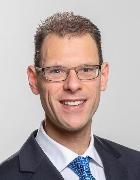
|
Prof. Dr. | Menno | Poot | 071 | +49 89 289-53555 |
Sekretariat
| Photo | Akad. Grad | Vorname | Nachname | Raum | Telefon | |
|---|---|---|---|---|---|---|

|
Susanne Antoinette | Tillich | 209 | +49 89 289-12358 |
Wissenschaftlerinnen und Wissenschaftler
| Photo | Akad. Grad | Vorname | Nachname | Raum | Telefon | |
|---|---|---|---|---|---|---|

|
M.Sc. | David | Hoch | 075 | +49 89 289-12528 | |
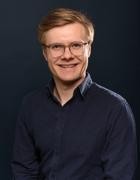
|
M.Sc. | Timo | Sommer | 077 | +49 89 289-12594 | |

|
Ph.D. | Pedro | Soubelet | – | +49 89 289-11461 | |

|
Giulio | Terrasanta | 528 | +49 89 289-12545 |
Studierende
| Photo | Akad. Grad | Vorname | Nachname | Raum | Telefon | |
|---|---|---|---|---|---|---|

|
Bartu | Bisgin | – | – | ||

|
Radhika | Goyal | – | – | ||
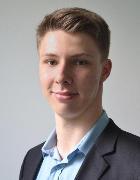
|
Kevin-Jeremy | Haas | 077 | – | ||
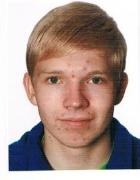
|
Andreas | Steinhart | – | – | ||

|
Peter | Wegmann | 075 | +49 89 289-12528 | ||

|
M.Sc. | Aditya | Yadav | – | +4915124858988 | |

|
Xiong | Yao | 528 | +49 89 289-12545 | ||

|
B.Sc. | Agnes Maria | Zinth | – | – |
Andere Mitarbeiterinnen und Mitarbeiter
| Photo | Akad. Grad | Vorname | Nachname | Raum | Telefon | |
|---|---|---|---|---|---|---|

|
Ralf | Lang | 129 | +49 89 289-12426 | ||
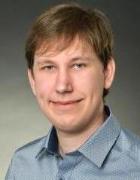
|
Simon | Stork | – | +49 89 289-13877 |
Lehrangebot der Arbeitsgruppe
Lehrveranstaltungen mit Beteiligung der Arbeitsgruppe
| Titel und Modulzuordnung | |||
|---|---|---|---|
| Art | SWS | Dozent(en) | Termine |
|
Nano- and Optomechanics
eLearning-Kurs Zuordnung zu Modulen: |
|||
| VI | 4 | Poot, M. |
Mo, 12:00–14:00, PH II 227 Do, 16:00–18:00, PH II 227 |
|
Journal Club Optomechanics and Quantum Optics
eLearning-Kurs Zuordnung zu Modulen: |
|||
| PS | 1 | Poot, M. | |
|
Repetitorium zu Journal-Club Optomechanik und Quantenoptik Zuordnung zu Modulen: |
|||
| RE | 2 |
Leitung/Koordination: Poot, M. |
|
Ausgeschriebene Angebote für Abschlussarbeiten an der Arbeitsgruppe
- Optomechanics of coupled micro-drums
- In this project you will dive into the interesting field of cavity optomechanics. We create micrometer-scale mechanical devices made from silicon nitride using advanced nanofabrication techniques here on campus: imagine a drum, but now more than 10 000x smaller! So small that it can be played ustilizing the momentum of photons, the so-called radiation pressure. You will also use light to extract information about mechanical properies - like their quality factors and resonance frequencies and even see their eigenmodes. What happens to these properties when many of the drums are coupled? That will be the key question of your project. We apply a novel technique to perform usually very long measurements on rather short time scales. We already have some working samples, so you can directly start and go ahead with the measurements. But you will also have the chance to learn many aspects of nanofabrication and make your own devices in the cleanroom, then measure them, and analyze the data.
- geeignet als
- Masterarbeit Applied and Engineering Physics
- Themensteller(in): Menno Poot
- Optomechanics with Single Photons
In optomechanics, light is used to measure and alter the dynamics of mechanical resonators. It is by far the most sensitive method to observe the tiny vibrations that nanomechanical devices perform: in one second one can determine their position with femtometer precision! Using light to measure the mechanics is not the only aspect of optomechanics. The same light can also be used to change the dynamics of the mechanical device through a process called cavity backaction. The photons exert a force on the resonator, the so-called radiation pressure. In this project we want to explore the ultimate limits to this force. The goal is to measure the force originating from a single photon! For this it is required that the photon interacts with the mechanical resonator as strongly as possible. For this we need to the design and make very low loss optical cavities, such as microring resonators. Also, the mechanical device should have a quality factor as high as possible. You will make both the optical and mechanical components from chips with highly-stressed silicon nitride using state-of-the-art nanofabrication in the cleanroom. Then the devices are placed in a vacuum chamber for their measurement. In our highly-automated setup you can very quickly characterize many of the devices on your chip. Then, with the perfect device parameters you can start to explore the more advanced measurements. Initially we can measure the devices in with pulsed light, but by using single photons we want to explore the ultimate limits to optomechanical forces.
See http://www.groups.ph.tum.de/en/qtech/openings/ for a detailed description of this project.- geeignet als
- Masterarbeit Quantum Science & Technology
- Themensteller(in): Menno Poot
- Quantum Optics on a Chip
Quantum optics is an extremely powerful approach towards quantum communication, quantum sensing, and quantum computing. In particular, quantum information stored in photons has very low decoherence and can be transmitted over large distances through optical fibers. To date, most experiments in quantum optics use optical tables full with mirrors and beam splitters that all have to be carefully aligned and stabilized. This may be good enough for initial demonstrations, but in order to bring quantum science into the realm of quantum technology, a more scalable approach is required.
With our expertise in making photonic chips using advanced nanofabrication, we are making putting these exciting quantum optics experiments on chips. Here, light is routed via optical waveguides. Furthermore, by bending a waveguide, one gets the equivalent of a free-space mirror; a beam splitter cube becomes a directional coupler and so on. By combining these elements, we can make the building block for e.g. an optical quantum computer. With that, the possibilities are almost unlimited.
For such large-scale optical quantum circuits we also want to incorporate single-photon sources, superconducting single-photon detectors, and optomechanical phase shifters. This all happens on a single chip. Making and characterizing the components is the first step and from there on, you are making more and more complex quantum chips. You will be doing the nanofabrication in the cleanroom, and then use our optical measurement setups to see how each device is performing. Depending on your preference, it may also be possible to add a modelling component to the project.
See http://www.groups.ph.tum.de/en/qtech/openings/ for a detailed description of this project.- geeignet als
- Masterarbeit Quantum Science & Technology
- Themensteller(in): Menno Poot
- Strong electrostatic effects in optomechanical devices
Optomechanics provides extremely sensitive methods to measure the displacement of mechanical resonators. However, the forces are much smaller in optomechanics compared to those in nanoelectromechanical systems (NEMS). The goal of the project is to make, and measure opto-electromechanical devices which have strong electrostatic interactions. This includes the electrostatic spring effect where the resonance frequency depends strongly on the applied voltage. The next step is trying to measure the potential by measuring the ringdown of different mechanical modes. The devices will be made using advanced nanofabrication techniques such as electron beam lithography and reactive ion etching.
See http://www.groups.ph.tum.de/en/qtech/openings/ for a detailed description of this project.- geeignet als
- Masterarbeit Quantum Science & Technology
- Themensteller(in): Menno Poot
- Synchronization and nonlinear dynamics of nanomechanical oscillators
Synchronization is a universal phenomenon that is knows since they days of Huygens. When two or more oscillators with slightly different frequencies are coupled, they will start to move in phase. We can create small mechanical devices using advanced nanofabrication techniques here on campus. By sending light of the right wavelength, they start to oscillate, and when increasing the power the optomechanical coupling synchronizes them. The goal of this project is to synchronize devices made from silicon nitride, which is a special material with a lot of stress in it, and to increase the number of synchronized oscillators. The larger the system becomes, the richer the nonlinear dynamics will become. You will first make the devices in the cleanroom, measure them, and analyze the data.
See http://www.groups.ph.tum.de/en/qtech/openings/ for a detailed description of this project.- geeignet als
- Masterarbeit Physik der kondensierten Materie
- Themensteller(in): Menno Poot
Abgeschlossene und laufende Abschlussarbeiten an der Arbeitsgruppe
- Quantum Optics on a Chip
- Abschlussarbeit im Masterstudiengang Quantum Science & Technology
- Themensteller(in): Menno Poot